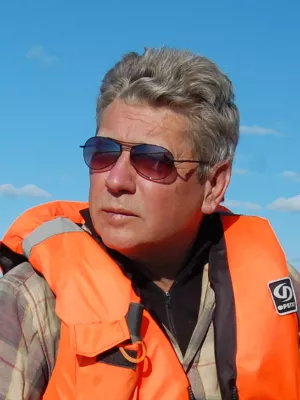
Per Möller
Professor

Late Quaternary Dynamics of Arctic Biota from Ancient Environmental Genomics
Author
Summary, in English
During the last glacial–interglacial cycle, Arctic biotas experienced substantial
climatic changes, yet the nature, extent and rate of their responses are not fully
understood1–8. Here we report a large-scale environmental DNA metagenomic study of ancient plant and mammal communities, analysing 535 permafrost and lake sediment samples from across the Arctic spanning the past 50,000 years.
Furthermore, we present 1,541 contemporary plant genome assemblies that were
generated as reference sequences. Our study provides several insights into the
long-term dynamics of the Arctic biota at the circumpolar and regional scales. Our key fndings include: (1) a relatively homogeneous steppe–tundra fora dominated the Arctic during the Last Glacial Maximum, followed by regional divergence of vegetation during the Holocene epoch; (2) certain grazing animals consistently co-occurred in space and time; (3) humans appear to have been a minor factor in driving animal distributions; (4) higher efective precipitation, as well as an increase in the proportion of wetland plants, show negative efects on animal diversity; (5) the persistence of the steppe–tundra vegetation in northern Siberia enabled the late survival of several now-extinct megafauna species, including the woolly mammoth until 3.9 ± 0.2 thousand years ago (ka) and the woolly rhinoceros until 9.8 ± 0.2 ka; and (6) phylogenetic analysis of mammoth environmental DNA reveals a previously unsampled mitochondrial lineage. Our fndings highlight the power of ancient environmental metagenomics analyses to advance understanding of population histories and long-term ecological dynamics
climatic changes, yet the nature, extent and rate of their responses are not fully
understood1–8. Here we report a large-scale environmental DNA metagenomic study of ancient plant and mammal communities, analysing 535 permafrost and lake sediment samples from across the Arctic spanning the past 50,000 years.
Furthermore, we present 1,541 contemporary plant genome assemblies that were
generated as reference sequences. Our study provides several insights into the
long-term dynamics of the Arctic biota at the circumpolar and regional scales. Our key fndings include: (1) a relatively homogeneous steppe–tundra fora dominated the Arctic during the Last Glacial Maximum, followed by regional divergence of vegetation during the Holocene epoch; (2) certain grazing animals consistently co-occurred in space and time; (3) humans appear to have been a minor factor in driving animal distributions; (4) higher efective precipitation, as well as an increase in the proportion of wetland plants, show negative efects on animal diversity; (5) the persistence of the steppe–tundra vegetation in northern Siberia enabled the late survival of several now-extinct megafauna species, including the woolly mammoth until 3.9 ± 0.2 thousand years ago (ka) and the woolly rhinoceros until 9.8 ± 0.2 ka; and (6) phylogenetic analysis of mammoth environmental DNA reveals a previously unsampled mitochondrial lineage. Our fndings highlight the power of ancient environmental metagenomics analyses to advance understanding of population histories and long-term ecological dynamics
Department/s
- Quaternary Sciences
Publishing year
2021-10-20
Language
English
Pages
86-92
Publication/Series
Nature
Volume
600
Issue
7887
Document type
Journal article
Publisher
Nature Publishing Group
Topic
- Climate Research
- Geology
Keywords
- climate-change ecology
- Ecological networks
- Metagenomics
- Next-generation sequencing
- Palaeoecology
Status
Published
ISBN/ISSN/Other
- ISSN: 0028-0836

